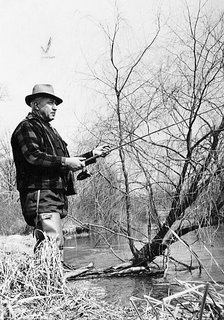The Family Court in New York State is the court that handles various private matters, including juvenile delinquency, persons in need of supervision, and matters relating to child custody and support of dependents. The court was formerly known as the Children's Court but became the Family Court in 1962. Among the cases frequently heard are petitions brought by the county social services department seeking financial assistance for persons receiving public assistance. These "welfare cases," as they were known, are usually brought against the father of an out-of-wedlock child or a divorced or separated husband who has failed to support his former spouse or children. The Family Court has the authority to determine responsibility and direct the terms of support in an appropriate case. The court can enforce its orders by a contempt order, including remanding a person who fails to comply with jail.
Family Court proceedings are supposed to be private. Unlike other courts, the public cannot view its proceedings or access its case records. Family Courts usually have relatively small courtrooms, frequently located in the county courthouses in upstate New York counties. Cases are staggered to provide the necessary privacy.
Unlike Rensselaer County, which housed its Family Court in an appropriate facility and heard cases from all fourteen towns and two cities, the Albany County Family Court, in the early 1960s, used an open area in the old (since remodeled) Albany County courthouse for its hearings. In further violation of privacy, then Family Court judge Robert J. Laffin, a former Albany Police Court judge, "rode the circuit" on Friday mornings once or twice a month, stopping first in the City of Watervliet, where he held proceedings in the open City Court courtroom and then traveled north to the City of Cohoes where he held hearings in the open City Court.
One Friday morning, probably in 1964 or 1965, I arrived at the office of Seymour Fox, where I was then employed and was instructed by Mr. Fox to go to the Cohoes City Court to represent a young man, who I will call "Jim". Jim was a client of Mr. Fox, who was handling his injury claim. At this time, anyone of the age of 18 could buy and consume alcohol, but a male who had not reached his majority, then age 21, could not be married by a Town Justice of the Peace (as Town Justices were then known) without parental consent. Jim was 20 years of age.
When I arrived at the Cohoes City Court, perhaps two dozen people were in the room awaiting their turn before Judge Laffin. Jim showed me a petition that had been served upon him, whereby the Albany County Department of Social Services was seeking an order for him to pay support for his wife and her two children, who were welfare recipients by a former marriage. Jim told me that he had had a brief affair with this divorced woman a couple of months previously. Following an evening of drinking, they went to a local Town Justice of the Peace who performed a marriage ceremony, although they didn't have a marriage license. Based on these facts, I had two defenses: (a) the marriage was invalid because there was no marriage license, and (b) even if there had been a marriage license, there had been no consent by Jim's parents. Jim never lived with his "wife" and hadn't even seen her again after they broke up shortly after the marriage ceremony.
Support cases are civil in nature. Unlike a criminal charge to which an accused enters a guilty or not guilty plea, a civil petition is responded to by admitting or denying each allegation and, when appropriate, setting forth any defenses.
When Jim's case was called, I went to the bench with Jim. Judge Laffin read the petition and asked Jim, "How do you plead guilty or not guilty?" I was astounded! Even though this was my first Family Court case, I knew it was not proceeding properly. I interjected that on Jim's behalf, I wanted to admit certain allegations of the petition, deny others, and explain his defense. Judge Laffin looked at me, then turned to Jim and asked: "Guilty or not guilty?" Once again, I tried to explain that I wanted to respond to the allegations but was ignored. The next time he was asked, Jim said, "Not guilty." To my surprise, Judge Laffin said he was being remanded to the Albany County Jail. Jim was put in handcuffs and led away by a bailiff.
I was at a total loss and couldn't believe what had happened. I waited until Judge Laffin went through the entire calendar of cases and approached him. With the audience gone, I tried to discuss the matter, but Judge Laffin told me to be at the Family Court in Albany at 2:00 pm that afternoon for a hearing.
Shortly after I arrived, Jim was led in, still handcuffed. Judge Laffin then read the petition and a written response that I had hastily prepared. He questioned Jim about his age and the circumstances of the marriage ceremony. He then said the marriage was obviously invalid, and Jim was not required to pay any support. He dismissed the petition, ordered the bailiff to remove the handcuffs, and told Jim he was free to go.
I never appeared before Judge Laffin again, but I understood that his successors followed proper procedures.

